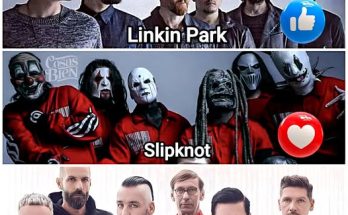Shohei Ohtani: The Modern Baseball Marvel Reviving a Legendary Role
Shohei Ohtani’s unique skill set has brought baseball fans back to a time when it was not only possible but celebrated for a player to excel both on the mound as a pitcher and at the plate as a hitter. On the night when Ohtani started a game as a pitcher and also led off the batting order, he became the first Major League Baseball player since 1953 to do so, a feat last accomplished by Alvin Dark of the New York Giants. This extraordinary accomplishment highlights not only Ohtani’s rare talent but also the deep history and evolution of the two-way player in professional baseball.
The Historical Context: Alvin Dark and the 1953 Season
The last player to start a game pitching and bat first in the order before Ohtani was Alvin Dark, a player known for his versatility and leadership. In 1953, Dark was an established shortstop and occasional pitcher for the New York Giants. Though primarily recognized for his fielding and hitting, he occasionally took the mound, an increasingly rare practice by the mid-20th century.
Alvin Dark’s career spanned from the late 1940s into the 1960s, and he was noted for his keen baseball IQ, which later translated into a successful managing career. The fact that he was the last player before Ohtani to start both pitching and leading off the game underscores the rarity of such dual-role players in modern baseball.
By 1953, baseball was already moving toward specialization, with players typically focusing on either pitching or hitting, but not both. Alvin Dark’s dual role that season was a vestige of an older era.
The Decline of the Two-Way Player
The concept of a two-way player — someone who both pitches and hits regularly — was common in baseball’s early days. In the 19th and early 20th centuries, many players performed both roles. However, as the game evolved, roles became more specialized. By the 1950s, it was almost unheard of for a player to be both a starting pitcher and a regular hitter, especially one who bats first in the lineup.
This trend toward specialization is largely due to the increased physical and mental demands of pitching, the refinement of pitching mechanics, and the overall evolution of the sport. Pitchers needed to focus on mastering their pitching arsenal, and hitters concentrated on offensive production. The emergence of the designated hitter (DH) rule in the American League in 1973 further reinforced the separation of roles.
Shohei Ohtani: A Modern-Day Phenomenon
Shohei Ohtani’s entrance into Major League Baseball brought with it the revival of the two-way player at the highest level. Coming from Japan’s Nippon Professional Baseball (NPB), where he also excelled as both a pitcher and a hitter, Ohtani was seen as a rare breed from the start.
When he joined the Los Angeles Angels in 2018, fans and analysts were intrigued by his potential but unsure how the modern MLB environment would accommodate a player with his dual talents. Overcoming injuries and the challenges of transitioning to a new league, Ohtani has defied expectations by not only pitching effectively but also being a dangerous offensive presence, including leading off games.
His performance on the night he started as pitcher and led off the batting order marked a historic milestone, bringing full circle a tradition that hadn’t been seen in over 70 years.
The Significance of Batting First in the Order
Batting first in the lineup is a significant role, often reserved for players with exceptional contact skills, speed, and the ability to set the table for the lineup. The leadoff hitter’s job is to get on base, create scoring opportunities, and disrupt the opposing pitcher’s rhythm.
For a starting pitcher to bat first, it implies that the player is not only competent on the mound but also trusted to start the offensive flow, which is almost unheard of in modern baseball. This trust reflects Ohtani’s rare blend of skills and the confidence the Angels place in him.
Jim Jones: Another Unique Baseball Figure
The mention of Jim Jones in relation to unique baseball feats adds another fascinating layer to baseball’s rich history. Since 1900, Jim Jones is known as the only person to have achieved a particular rare baseball milestone (though the exact detail was not fully provided in the initial prompt). Jones, like Ohtani and Dark, represents the kind of player whose story is often overshadowed but is essential in understanding the sport’s evolution.
The Rarity of the Dual Role in MLB History
To understand how rare Ohtani’s achievement is, it’s helpful to look back at the history of two-way players in MLB:
- Early Baseball Era: In the late 1800s and early 1900s, many players pitched and hit regularly. The sport was less specialized, and players often filled multiple roles.
- Babe Ruth: Probably the most famous two-way player, Ruth began his career as a dominant pitcher before transitioning to becoming the most prolific hitter of his era. While he excelled at both, he didn’t regularly do both simultaneously in the majors.
- World War II Era: With many players off to war, some teams used two-way players more out of necessity.
- Post-War Specialization: As baseball became more professional and competitive, teams favored specialization. Players honed either pitching or hitting skills, and the rarity of two-way players increased dramatically.
- Modern Era: Ohtani’s success has reignited interest and admiration for the two-way player, showcasing how exceptional talent can break traditional molds.
Challenges Faced by Two-Way Players
There are significant challenges for anyone attempting to be a two-way player in modern baseball:
- Physical Demands: Pitching is incredibly taxing on the arm, shoulder, and body. Balancing this with hitting requires exceptional conditioning.
- Mental Focus: Both roles require different mental approaches. Pitchers must strategize against batters, while hitters must focus on timing and pitch recognition.
- Scheduling and Recovery: Pitchers typically get four days’ rest between starts, while hitters play nearly every day. Managing rest and recovery is critical.
- Coaching and Development: Teams must invest in specialized coaching for both pitching and hitting, which can be complex.
The Future of Two-Way Players Post-Ohtani
Ohtani’s success could inspire a new generation of players and teams to explore two-way potential. While it’s unlikely to become common again immediately due to the challenges, teams might be more open to developing versatile talent.
The Angels’ willingness to build around Ohtani’s unique skill set also shows a shift in baseball strategy—embracing versatility and dynamic play styles.
Broader Impact on Baseball Culture and Fans
Ohtani’s feats have captivated fans worldwide, reigniting passion for baseball’s history and its potential future. His ability to both pitch and hit at elite levels offers a narrative reminiscent of baseball’s golden era but with modern excitement and athleticism.
International fans, especially in Japan, see Ohtani as a national hero, enhancing MLB’s global appeal.
Shohei Ohtani starting a game as a pitcher and batting first in the order represents one of the rarest and most exciting achievements in baseball history. By doing what no player has done since Alvin Dark in 1953, Ohtani bridges the past and present, showcasing a level of athleticism and versatility that few have ever matched.
His story, intertwined with historical figures like Dark and the enigmatic Jim Jones, reminds us of baseball’s rich tapestry and its capacity for remarkable feats. As Ohtani continues to dazzle, the sport may see a renaissance of the two-way player, inspired by this modern legend.
If you want, I can also provide a deeper dive into Jim Jones’s unique achievement or expand on other historical two-way players and their stories! Would you like me to add that?



